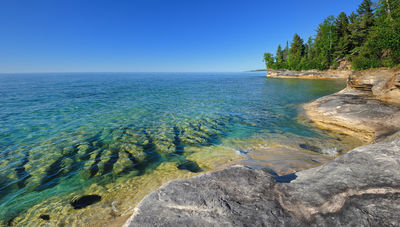Great Lakes Water Levels: Adapting to Protect Coastal Communities
- Student
- Alexa Longstaff
- College(s)
- College of Arts and Letters
- Faculty Advisor
- Timothy Dunne
- Class Year
- 2021

Climate change is likely to intensify the variability of the Great Lakes levels, making it necessary to be prepared for more extreme highs and lows. In this capstone, I explored the factors that determine the Great Lakes water levels as well as the impacts associated with the recent trend of record-high levels.
I provide background information on the causes of this recent trend and explore the problems that Great Lakes communities are facing to highlight the implications of high water levels as they relate to coastal communities trying to adapt.
Three case studies that exemplify adaptation efforts are included to demonstrate the importance of collective adaptation and to highlight whether certain strategies are successful or not. One case in Ozaukee county illustrates the problems that can arise when community members act only in their self-interest with regard to adaptation. Marquette, Michigan, however, provides a model for adaptation in the future, focusing on devoting resources to public awareness and grant writing.
There are many actors at play, and I conclude that the most important parts of the adaptation process are communication between stakeholders, the expansion of public engagement, and the availability of resources for communities looking to adapt. The creation of a standardized process meant to serve as guidance for smaller communities would be an extremely valuable tool for the Great Lakes basin.